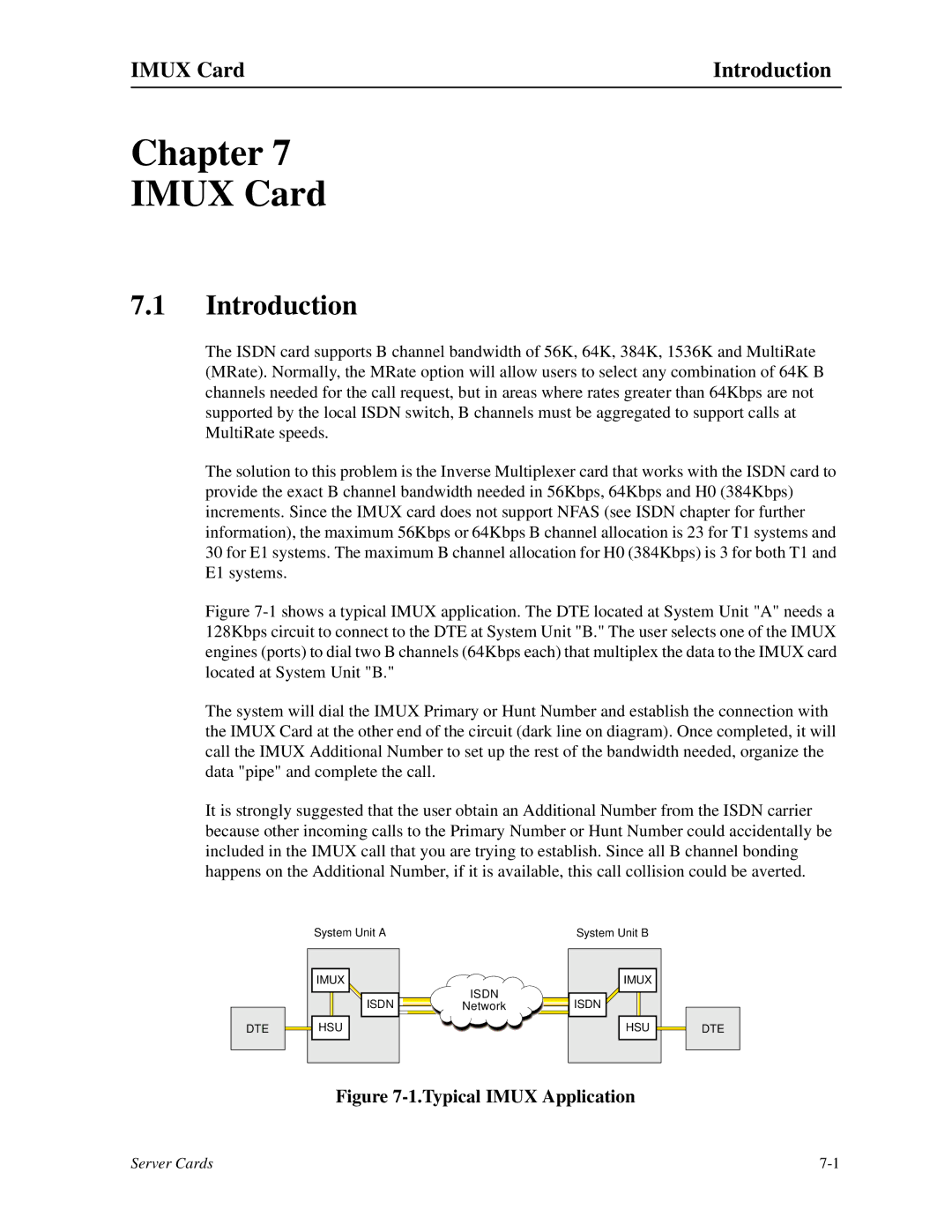
IMUX Card | Introduction |
Chapter 7
IMUX Card
7.1Introduction
The ISDN card supports B channel bandwidth of 56K, 64K, 384K, 1536K and MultiRate (MRate). Normally, the MRate option will allow users to select any combination of 64K B channels needed for the call request, but in areas where rates greater than 64Kbps are not supported by the local ISDN switch, B channels must be aggregated to support calls at MultiRate speeds.
The solution to this problem is the Inverse Multiplexer card that works with the ISDN card to provide the exact B channel bandwidth needed in 56Kbps, 64Kbps and H0 (384Kbps) increments. Since the IMUX card does not support NFAS (see ISDN chapter for further information), the maximum 56Kbps or 64Kbps B channel allocation is 23 for T1 systems and 30 for E1 systems. The maximum B channel allocation for H0 (384Kbps) is 3 for both T1 and E1 systems.
Figure 7-1 shows a typical IMUX application. The DTE located at System Unit "A" needs a 128Kbps circuit to connect to the DTE at System Unit "B." The user selects one of the IMUX engines (ports) to dial two B channels (64Kbps each) that multiplex the data to the IMUX card located at System Unit "B."
The system will dial the IMUX Primary or Hunt Number and establish the connection with the IMUX Card at the other end of the circuit (dark line on diagram). Once completed, it will call the IMUX Additional Number to set up the rest of the bandwidth needed, organize the data "pipe" and complete the call.
It is strongly suggested that the user obtain an Additional Number from the ISDN carrier because other incoming calls to the Primary Number or Hunt Number could accidentally be included in the IMUX call that you are trying to establish. Since all B channel bonding happens on the Additional Number, if it is available, this call collision could be averted.
DTE
System Unit A
IMUX |
ISDN |
HSU |
ISDN
Network
System Unit B
IMUX |
ISDN |
HSU |
DTE
Figure 7-1.Typical IMUX Application
Server Cards |
